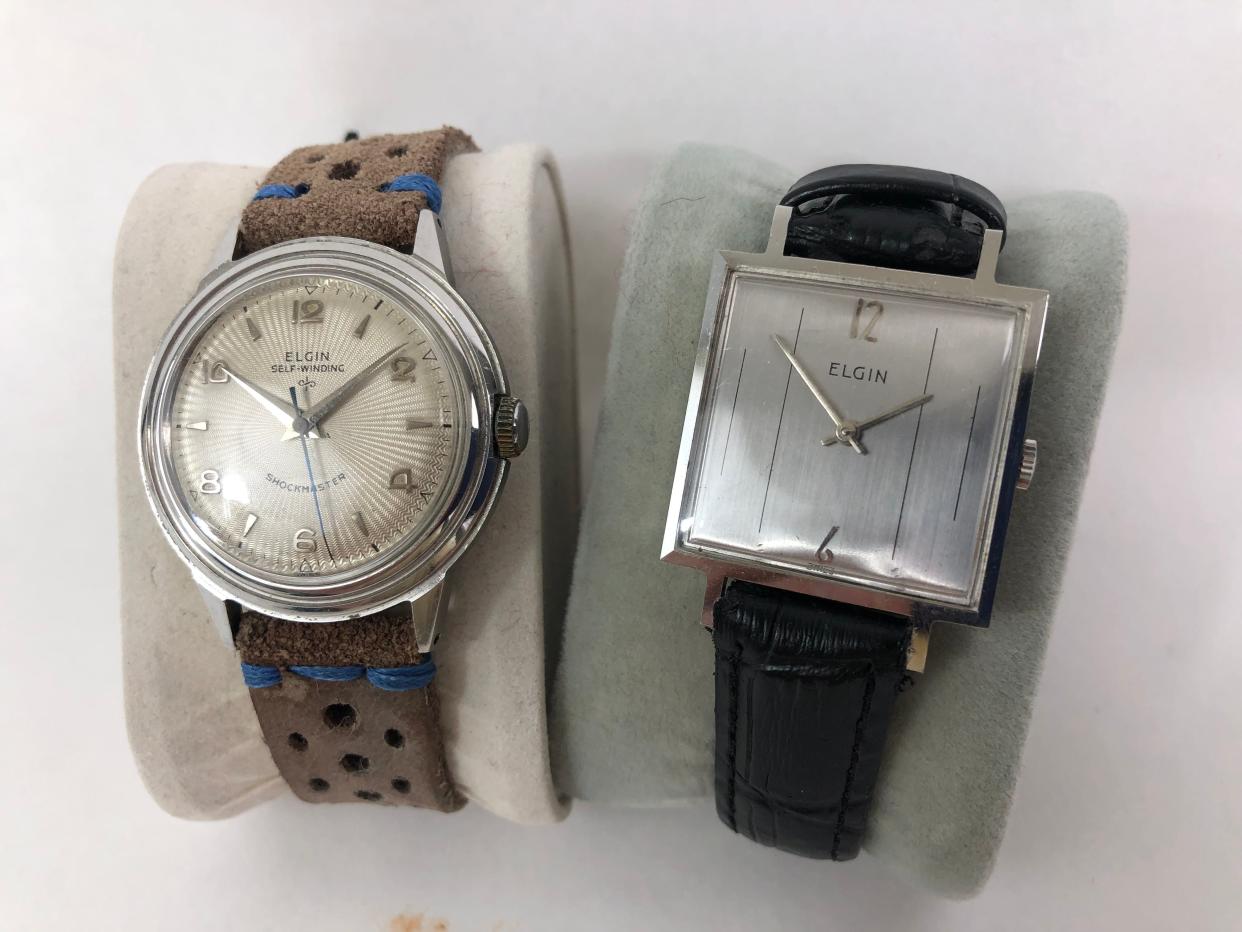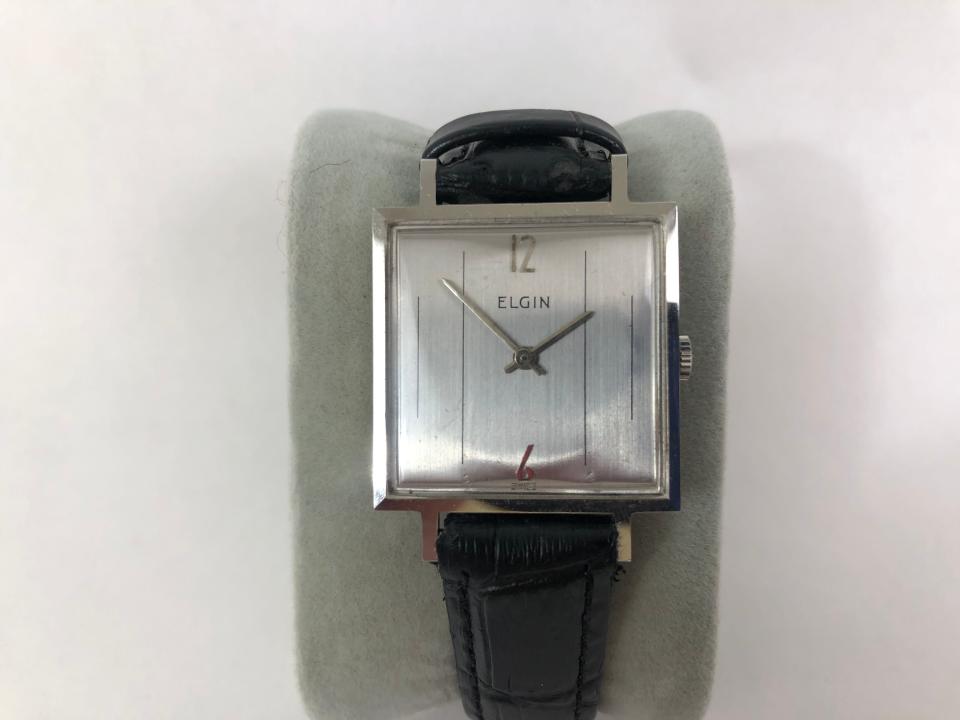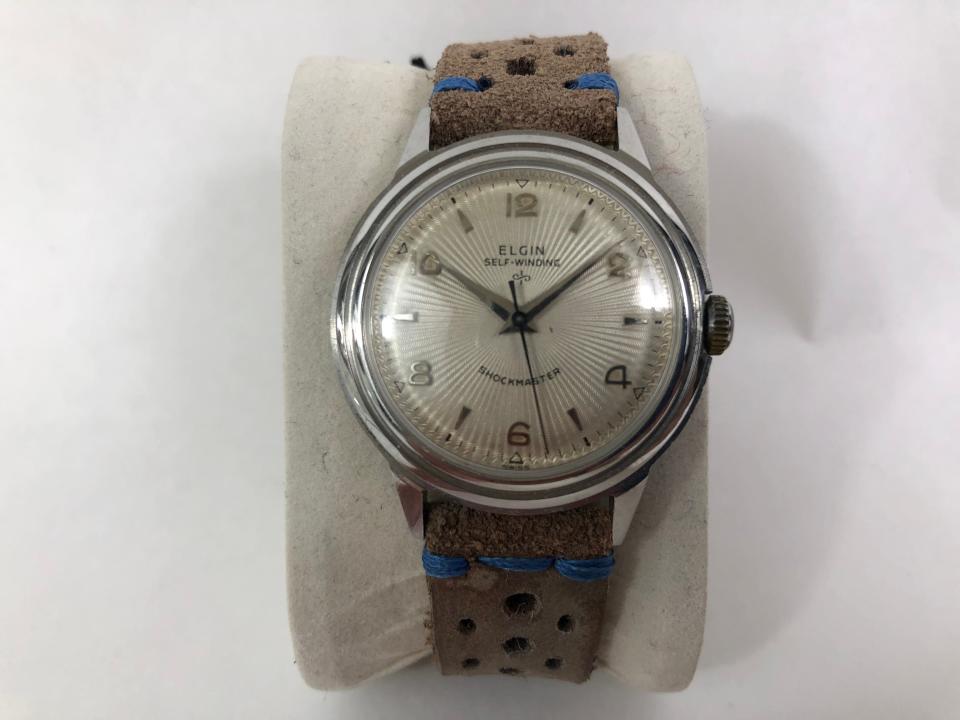Antiques: The history of Elgin, the workingman's watch

We haven't revisited the timepiece category lately, so let's pick it up again today. Elgin — the place — is a city in Illinois about 35 miles northwest of Chicago. It was founded in 1835, chartered by the state in 1854, and is perhaps best known today for its Victorian architecture.
In fact, many of those stately homes were commissioned by executives of the National Watch Company, itself founded in 1864, and 10 years later renamed the Elgin National Watch Company. At one time, Elgin was one of the largest watchmakers in the USA, if not the very largest. It's a name worth knowing, so here's some background.
For starters, we've all seen the famous 1869 photo of the two giant locomotives nose-to-nose celebrating the completion of the first transcontinental railroad. What's less well known is the many horrible wrecks in those early days when a lack of accurate timekeeping pieces caused one train to pile into the back of another.
The railroad industry quickly became aware of the need for better timepieces, and the nascent American watchmaking industry was called upon to up its game. The result was the "railroad-grade" pocket watch that featured Arabic numerals, more jewels, lever setting of the time and other improvements. Along with Hamilton and Waltham, Elgin was among the leaders in introducing models that met these standards, and their watches saved many lives.

All continued well for Elgin as the 19th century became the 20th, and by 1940, the company could boast of being the largest watchmaker in the country. With the advent of WWII, Elgin became even bigger, adding thousands of employees in order to make vast quantities of watches, instruments and munition timing devices for the Allies. At its peak, some 5,500 employees worked around the clock to churn out such products.
At war's end, Elgin's transition back to peacetime production was smoother than most, and in 1951, the firm was able to celebrate the making of its 50 millionth watch movement — an amazing feat. Mass production of watches at moderate prices had made Elgin the watch of choice for America's working man.
Among the more interesting facts about this company is that in 1910, it built and maintained a sophisticated astronomical observatory near its main campus in order to calculate precise time via the known movement of celestial bodies. All of its factory clocks were synchronized to astronomical time, which gave Elgin the unique ability to say that its timepieces were "timed to the stars."
Beginning in the 1930s, many Elgin models also included a star on the dial to reinforce its slogan. Eventually, its product lines grew to include the basic Elgin models with 15-jewel movements, the Elgin DeLuxe with 17 jewels and the Lord and Lady Elgins with 19-23 jewels.

Like so many American watchmakers, the end came in the 1960s as higher production costs, an increase in imports and the move towards electric timepieces combined to hasten its doom. All factories were shuttered and the brand sold and then resold again.
The good news, at least for timepiece enthusiasts, is that original Elgin watches remain widely available from vintage dealers and galleries like ours. Their cost rarely exceeds a few hundred dollars, although some of its rarer gold-cased and railroad watches can reach four figures. At their best, high-end Elgins were exquisitely made, but it's the workhorse models that are often more appealing. Your grandpa and mine might well have owned one.
Mike Rivkin and his wife, Linda, are longtime residents of Rancho Mirage. For many years, he was an award-winning catalogue publisher and has authored seven books, along with countless articles. Now, he's the owner of Antique Galleries of Palm Springs. Want to send Mike a question about antiques? Drop him a line at info@silverfishpress.com.
This article originally appeared on Palm Springs Desert Sun: Antiques: The history of Elgin, the workingman's watch

